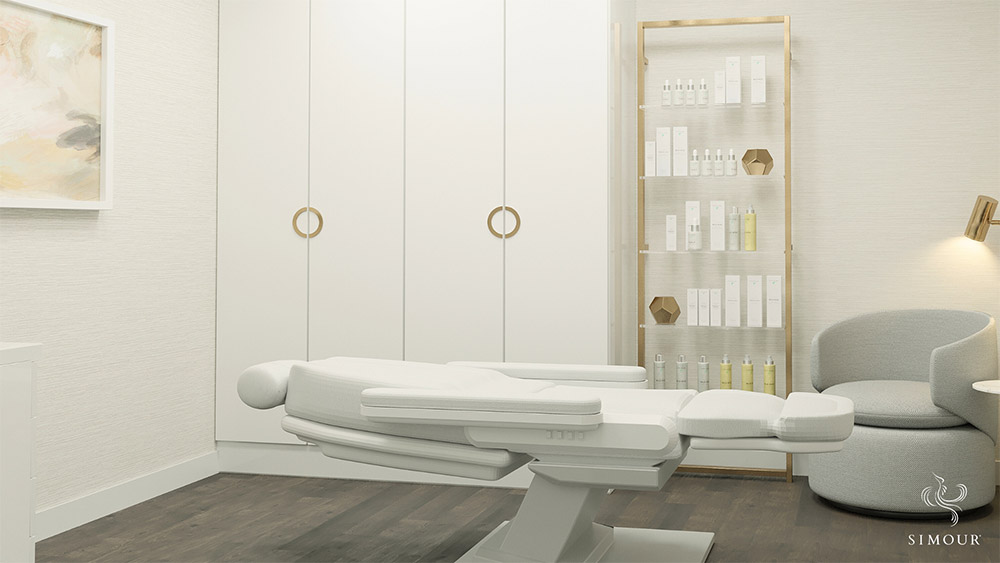“The time is always right to do what is right.” – Martin Luther King
The interior design of your practice holds immense power in shaping patient experiences and outcomes. Understanding healthcare regulations firsthand isn’t just about meeting requirements—it’s a shortcut to creating spaces that prioritize safety, comfort, and the overall success of healthcare environments, saving time, money, and energy in the process. Let’s explore three reasons why sticking to these rules is essential in crafting spaces welcoming and supportive for everyone who walks through the doors of your practice.
1. Patient Safety and Infection Control
In a healthcare setting, patient safety is paramount. Every element of the interior design must be carefully considered to minimize risks and prevent harm to patients. This is where healthcare regulations step in, providing guidelines and standards from the layout of patient rooms to the materials used in construction.
One critical aspect is infection control. Hospitals are hotspots for infectious diseases, and proper interior design can significantly reduce the spread of infections. Regulations stipulate the types of surfaces that can be used—preferring non-porous, easily cleanable materials that resist bacteria growth. Floors, walls, and even furniture upholstery must meet strict standards to facilitate thorough cleaning and disinfection.
Proper ventilation and air quality are also vital components of patient safety. Regulations mandate the installation of high-quality air filtration systems to minimize the spread of airborne pathogens. Compliance with these regulations not only reduces the risk of healthcare-associated infections but also promotes a healthier environment for patients, staff, and visitors.
2. Improved Accessibility and Patient Experience
Compliance with regulations, such as the Americans with Disabilities Act (ADA), also leads to improved accessibility in healthcare spaces. Designing with accessibility in mind—ramps, handrails, wider doorways, and accessible restrooms—ensures that individuals with disabilities can navigate and use these facilities comfortably.
Beyond physical accessibility, regulations also address sensory factors that impact patient experience. Proper lighting, noise control, and ergonomic design contribute to a more welcoming and calming environment. Patients feel more at ease and comfortable during their stay, leading to reduced stress and better recovery outcomes.
Inclusivity in design benefits everyone, not just those with disabilities. Families, elderly patients, and even staff members appreciate facilities that are easy to navigate. Compliance with regulations, therefore, directly translates to a positive experience for all stakeholders involved.
3. Compliance and Risk Mitigation
Meeting healthcare regulations isn’t just about creating a safe and welcoming space—it’s also about legal compliance and risk mitigation. Non-compliance can result in significant consequences, including fines, lawsuits, and damage to a facility’s reputation. By adhering to regulations, healthcare facilities ensure they are on the right side of the law. Design professionals and facility managers can avoid legal troubles and focus their energies on providing quality care to patients.
Failure to comply with regulations can result in fines, lawsuits, and even the closure of facilities. For design professionals, staying updated with the latest regulations is not just about legality—it’s about mitigating risks and protecting clients and patients.
Moreover, adherence to regulations can also positively impact insurance premiums. Insurers often assess risk factors when determining premiums for healthcare facilities. By demonstrating compliance with healthcare regulations in the design phase, facilities can potentially lower their insurance costs, saving valuable resources that can be redirected toward patient care and facility improvements.
Moreover, compliance with regulations can lead to reduced insurance premiums. Insurers often consider risk factors when determining premiums for healthcare facilities. Facilities that demonstrate adherence to healthcare regulations in their design and operations are viewed as lower risk, potentially leading to lower insurance costs.
In essence, embracing compliance with healthcare regulations isn’t merely a box-ticking exercise—it’s a strategic investment in the well-being of patients, the sustainability of healthcare facilities, and the integrity of the entire industry. By recognizing the inherent benefits of compliance and weaving them seamlessly into design strategies, stakeholders can unlock a myriad of advantages that ripple through every aspect of medical interior design.
Book a discovery call today and let us help you get started in your journey to building truly healing spaces. We can’t wait to hear from you soon!




